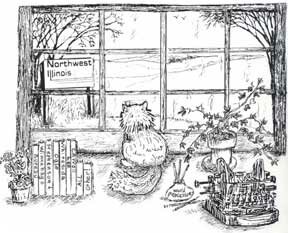Discover rewarding casino experiences. 
|
The reason we are fixed on Eby is that advertisements directed readers to the other bank in town by noting that “Masonic Hall” above Eby’s. First door north is Sprogle’s “Carroll County Bank,” second lot southwest of corner of Broad and Carroll John Sprogle, proprietor. With good magnification his name can be read on the window of the building next to Eby’s on the 1869 map mentioned earlier. Besides competition with Van Vechten’s “First National Bank,” they built mansions to rival one another in the east part of town (last week). Maybe they weren’t competing but it sure as heck could have been! There was also a third bank or rather a money lending house overlapping the other that of James Compton, Capt. James Compton, or “Compton and Fry” or “Compton and Co.” Editors back in the day wrote the weekly items to please the local readers who knew where what was located, who moved or exchanged what without thinking about tomorrow’s readers wanting to know a few more details. Without tracking issue by issue, for example, such information as Compton and Weed exchanging stores, where and how, we still wouldn’t know Compton’s location but it was probably on the west side of the street. It matters not. But “Compton and Co.” was a friend of editor Howlett, 1870, because he is often mentioned in the Gazette. He eventually left for greener money but as late as 1871 was the only bank noted in Lanark besides the First National.
One-time money lenders became directors of the Bank of Fergus Falls, Minnesota as noted last week. Many of the early businessmen did not stay and their futures became intertwined with other histories. Van Vechten was noted for touring and traveling and one of the last newsy bits has him off to New Mexico. There is next to nothing in the 1878 County history concerning banking interests in Lanark other than organization of the First National with John and Robert Paley being officers. Perhaps some estrangement had occurred between the Paleys and John Wolf because in 1877-78 Wolf was making plans to form a bank of his own which in April of 1878 Wolf organized the Exchange State Bank. There are varying ideas of just where the bank was first located. Hint in the old, moldering files of the Gazette is that the bank may well have occupied the Compton Co. banking house, near that, or in Sprogle’s Carroll County Bank. We’d have to apply lots of time to sort out the notes. Perhaps we’ll find it, then let your know! But the strategic corner lot had been owned by entrepreneur, George Sherwood, a big investor in real estate and who had not only the Driving Park (horses), but the “Opera House” or “Sherwood Hall” used for decades for meetings and entertainments. In the postcard picture its location can be seen with a long banner across the upper windows of the Hall. The corner lot had also been owned by Sherwood and by 1881 things were on the move again in downtown Lanark. Beginning the moving and shaking was the First National announcing that it was making $2,500 in improvements, the majority of the amount to make an addition to the rear/east end of their building for an expanding Post Office which remained there until the 1950’s. The Gazette moved thus to other rooms on the second level, again, that to the Valentine building mid-block, its headquarters until beyond the mid-twentieth century. In the new Post Office there’d be 600 new call boxes with Yale locks and 100 locked drawers of the latest pattern. A new clock graced the wall and a three-burner chandelier lit the room for transactions. (There was no door-to-door mail delivery as yet. You must call for your mail.) Besides that needed addition, directly across the street at the Shumway corner the old wooden clapboard was going down and the simple but elegant brick that stands yet was to be constructed. Alvaro, one of the original settlers, had waited twenty years to remove what the editor called “a dilapidated wreck” and wondered how he could do business there. The Hesses, too, were going brick, tearing down the false-front clapboards and putting up brick which would be with the older brick under one cornice to impress the crowds and expand the hardware store. The upstairs stored heating stoves and became the town’s second Opera House ... Vineyard Hall. In about the sixties, twentieth century, the second story was removed but the cornice with name was preserved and put on the now truncated one story. Moving buildings to be re-used was a common practice. The relatively light weight wooden clapboards, even the two story ones, were compact and easy to move. This item appeared in the Gazette, January, 1881 ... “Dave Weed can handle buildings with neatness and dispatch as demonstrated by moving the old Exchange State Bank next to Widmer’s blacksmith shop where it will be converted into a dwelling.” We may suppose that that was the second block of West Locust Street from other hints. George Sherwood had owned the corner lot, Broad and Carroll, plus the one directly north as well as others but had sold to John Wolf who, apparently, wanted his own lot and had moved from just south onto the corner which originally had been “Welch’s Cheap Grocery.” Read my notes with me and you’d understand it better!!! By the late months of 1881 the brick bank was up and “presenting a fine appearance to riders on the passenger trains passing through,” the Gazette declared. The “Inter-Ocean” in 1873 had reported that the Chicago and Pacific Railroad would extend its line one hundred miles west of Elgin to join the Western Union Railroad which meant the birth of Kittredge and two rail lines going through Lanark, a real boon. Lots of passengers moving by to admire the main street bricks. When completed, a description of the Exchange Bank read thus: “A large room faces on the main street on the first level. Running to west is a large parlor or waiting room in which bankers may interview clients or execute business. Back of that is a room which may also be entered from a side door and is to be used by Emerson Harnish for his music students. It is nicely furnished. The upper floor will be utilized by Weary and Faulkner, photographers who pride themselves on having the best-fitted studio in the county. A back room still needs a tenant. Contractors have been: Brickwork, Charlie Cogswell; Carpet, Charlie Cross and Painting, Abe Rowland.” The three ornately faced Victorian-era buildings south of the bank in the postcard were in their commercial heyday, held two businesses each on the ground level but the automobile and the mega marts have helped put the local store out of business. At that time, too, businesses or clubs met upstairs. In 1881 the weekly Gazette kept readers up on many little details, interesting then, human interest stories, tales to bring a smile and put you in touch with the neighbors such as this, “Resident cows hold a daily convention on the steps of the M.E. Church and have made a resolution to block the sidewalk and the city council permits it.” Such sweet, sentimental bits diluted the dispute of the volunteer fire department which in 1881 ended up “abandoning”’ their group and handing over “Old Neptune, the water tank on wheels taken to fires as a water source and other equipment. News of the department’s problems filled columns, as you can imagine. “Old Neptune,” by the way, was bought by a Hollywood movie studio to appear in the film concerning the Chicago Fire of ‘71.
The country was on edge upon hearing that President Garfield had been shot. He suffered for weeks, newspapers printing news of pulse and temperature, if he’d taken nourishment and so forth. The assassin, Charles Guiteau, was from Freeport of a respectable family Bicycling was the popular guy sport. “Groups of them peddled through, stopping at Emmanuel Stover’s to hail son, Frank, to join them. Piles of brick adorned the streets and block foot traffic ... 100,000 at a time were hauled from Hallett’s brick kiln in Mt. Carroll ... 87 loads of a 1,000 or 1,100 at a load. There was plenty of news making back in the ‘80’s, brick making among them. With the compiling of the Sesquicentennial book for Lanark’s 150th, we’ve come to know more about our fore bearers in history. And that came to mind with the collapse of the old National Bank building on the 4th. It was almost a personal loss because after all, these buildings were constructed by human “beans” just like ourselves. Watch for the book. The pictures of the “demise” of the building were taken by Judy Dampman, Lanark. Thanks.
|








